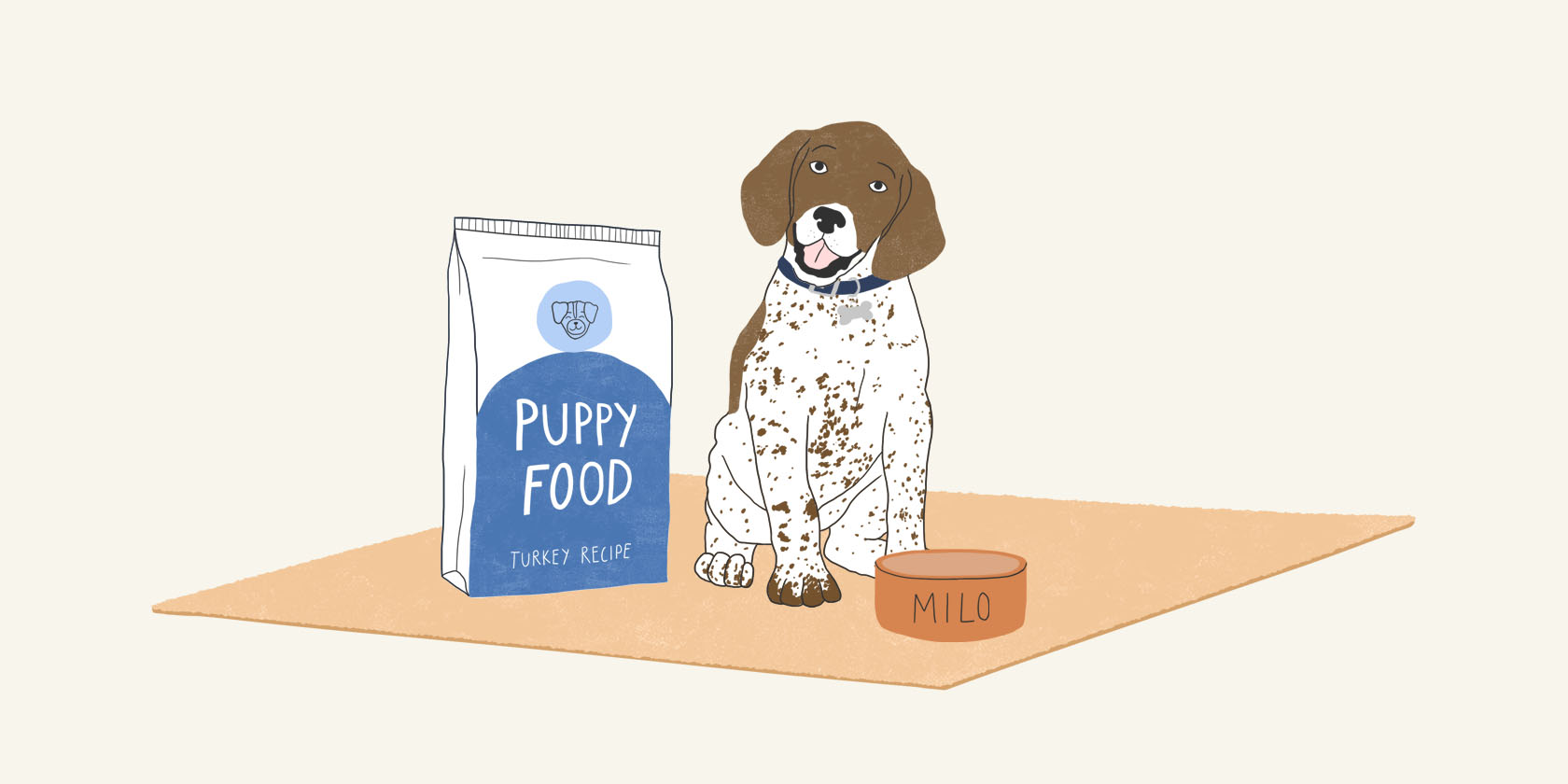When you bring your new pet home, you’ll need to establish their diet and a feeding schedule. Feeding your dog or cat the right food helps to ensure their best health, energy, and vitality.
Ideally, you should stick with the food and feeding schedule that your pet was experiencing at the shelter, foster home, or breeder to help them transition into their new home. After a week, you can begin to adjust their food or feeding schedule — just make sure to do it gradually.
If you want to change your pet’s diet after adoption, consult with your veterinarian about the best food to feed them and how much to feed them. Many factors go into the decision, including your pet’s age, existing medical conditions, oral health, preferences and “tastes,” and your preferences and budget. Whatever you decide, it’s important to feed your pet a complete, balanced food.
How To Transition Your Pet to New Food
Mix in the new food with the old food gradually, over the course of 1 to 2 weeks. This will help both your pet’s taste buds and their tummy (intestinal enzymes and beneficial bacteria) adapt and become used to the new diet. This change can often be safely completed in as little as seven days, but if your pet has a particularly picky appetite or sensitive stomach, extending the change over 2 weeks will usually ensure a smoother transition.
- Days 1 and 2 (or 1-4): Mix 25% new food with 75% old food
- Days 3, 4, and 5 (or 5-10): Mix 50% new food with 50% old food
- Days 6 and 7 (or 11-14): Mix 75% new food with 25% old food
After that, your pet should be ready to go with their new diet.
Feeding a Puppy or Dog
Feeding a puppy is a little different from feeding a dog. Factors vary based on age and eventually a puppy's food and schedule will transition to that of an adult dog's.
How Much
How much to feed your dog or puppy depends on their age, weight, and activity level, as well as the calorie count and nutrient density of the food. While the label on a bag of food can give you an estimate, it’s best to work with your veterinarian to determine how much food your dog should eat each day.
When
Feeding your puppy on a schedule will help them settle into a routine in their new home. Even adult dogs can benefit from eating on a schedule. Avoid free feeding, or grazing, as it can lead to obesity and can delay your recognition of problems with feeding (like decreased appetite). Rather than free feeding, take the amount of food they should eat daily and feed half of the amount in the morning and the other in the evening. This can help to make potty training and crate training easier since you can better time their potty breaks.
For the food gobblers, feeding with interactive toys or puzzles can help slow down their eating, while providing mental and physical exercise.
Transitioning to Adult Food
Your puppy needs more calories and different ratios of certain nutrients to grow and mature the best way and rate possible, which is why feeding them a puppy-specific formula of food is best. Breed and other factors can influence when is the best time to transition a puppy to adult food, but it typically happens between 1 and 2 years of age. Talk to your veterinarian to find out the right time to transition to adult-stage food.
Feeding a Kitten or Cat
Feeding a kitten is a little different than feeding a cat. Factors vary depending on age, but eventually kittens transition to adulthood and their food and feeding schedule change too.
What Type of Food
There are many types of food to feed your cat. If you’re looking at changing the type of food they eat, talk with your veterinarian for recommendations. If your cat doesn’t seem to be getting enough water, wet food can provide additional hydration to help keep them healthy.
How Much
How much to feed your cat varies depending on their age, weight, and the nutritional density of what they’re eating. Consult with your veterinarian about how many calories your cat needs daily.
Transitioning to Adult Food
It’s important to feed your cat a food that’s appropriate for their life stage. Your cat should be eating a kitten-specific formula through around 1 year of age, or they’re about 90% of their adult weight. Work with your veterinarian to determine the right time to transition to adult cat food.
Allergies and Intolerances
You likely won’t know initially if your newly adopted cat or dog has allergies or intolerances to different proteins or other aspects of their food. If an allergy was suspected by the shelter or your pet’s previous owner, work with your veterinarian to properly diagnose the allergy. If you do decide to transition your pet to a food that is different than what they ate at the shelter, do so slowly and watch out for changes in their poop, if they throw up, or if they develop a skin rash, which could indicate an allergy or intolerance to an ingredient in their food.
Don’t Forget to Factor in Treats
Although it can be tempting to give your dog or cat treats all the time, too many treats can cause health problems like obesity and also cause problems with them eating their actual food. Treats should be kept to a maximum of 10% of your pet’s daily calories. For training purposes, your pet’s dry food can be used as training treats.
If Your New Cat or Dog Won’t Eat
Sometimes a newly adopted pet won’t eat great right away. The adoption process paired with a new environment can be a stressful transition for them. Sticking with the diet they were on at the shelter or rescue can help to minimize the chances of this happening. If your new dog or cat won’t eat, you can also try adding the following items to their food to encourage their appetite:
- Boiled rice
- Boiled chicken (no skin, seasoning, or bones)
- Meat-based baby food
- Canned (wet) food
- Mix in a few treats
If you’ve tried these tips and your new cat or dog isn’t eating anything, it’s time for a call and visit to the veterinarian, as there could be a medical problem causing it.
ZPC-00592R2




